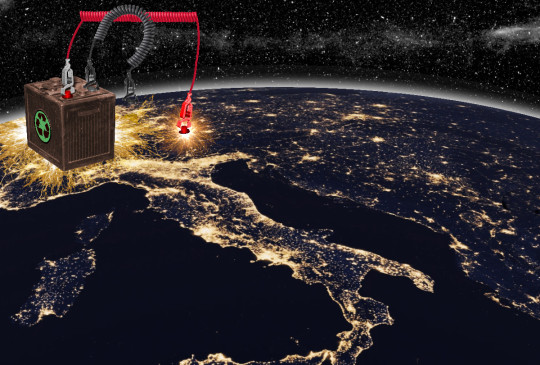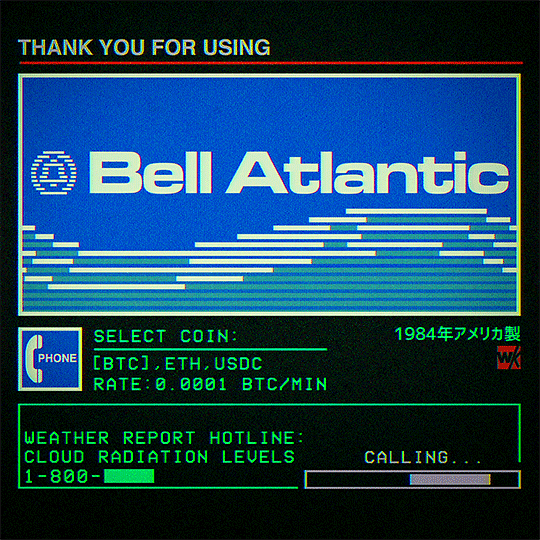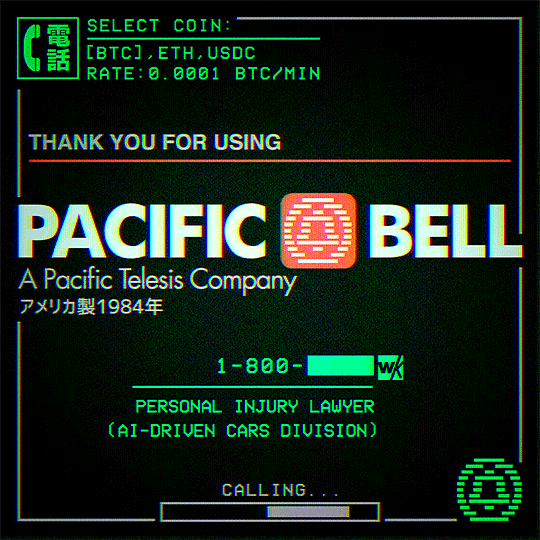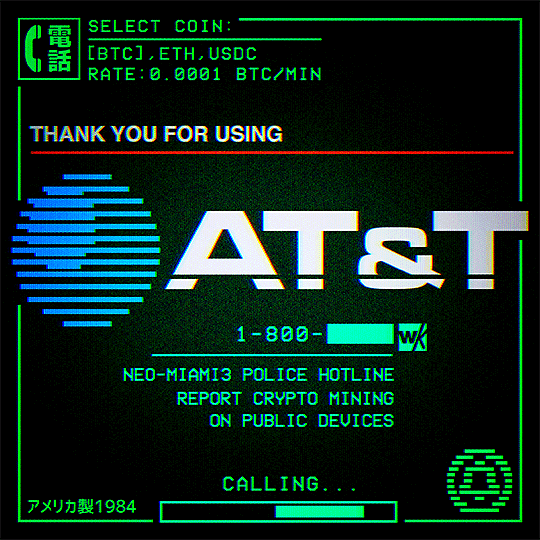#loop science
Explore tagged Tumblr posts
Text

Cygnus Loop
3K notes
·
View notes
Text

Visa84
#cyberpunk#pop art#technology#science fiction#scifi#dystopia#retro computing#retro future#retro futurism#1984#dysopian#scifi art#art#80s#post internet#postinternet#digital#animation#looping#gif
626 notes
·
View notes
Text
i can't stop chewing on the MASH time loop situation. my star trek brain will not turn off. there is definitely some kind of temporal anomaly at play, but it's not really a time loop in the traditional sense.
effects carry over from loop to loop. they appear to age. the same wounded soldiers appear on the table three times, but the scars of past surgeries are still there. a character leaves or dies and is gone from the mash forever; their replacement arrives near the end of the war and is still there at the beginning. the dates overlap, yet their presence is sequential. the other characters remember all of them.
how far does this effect extend? if it's summer again at mash, is it summer in tokyo? is it summer in maine? if BJ is in korea two years before he arrived, who's in residency in california, marrying his wife, conceiving his child?
their family trees at home deform—different wives, different children, loved ones alternately dead and alive and never born. those inside are oblivious to what they've lost. hawkeye remembers trapper, but not his sister. what happens in korea persists; the world outside is a fragile suggestion. he tells a soldier that men at the front can't see the whole war, only the other guys dug in with them on their one little hill.
for a deep space nine fan this is irresistible. hawkeye says, wars end, but war is forever. kira asks, if the past has changed, why do i still remember it? sisko never left that ship. time itself is warped by trauma. it is not linear. you exist here. you choose to exist here.
#literally the deep space nine pilot rewired my brain and i will never not see it wherever i can#my tng-style trek science explanation is almost ready to go but i'm trying to make it slightly less babbly#and i know i'll have to update it once i see the rest of the show...#but what is the fake scientific method if not hypothesis-analysis-revision right??#mash#mash time loop#mashblogging
575 notes
·
View notes
Text
Circular battery self-sufficiency

I'm coming to DEFCON! On FRIDAY (Aug 9), I'm emceeing the EFF POKER TOURNAMENT (noon at the Horseshoe Poker Room), and appearing on the BRICKED AND ABANDONED panel (5PM, LVCC - L1 - HW1–11–01). On SATURDAY (Aug 10), I'm giving a keynote called "DISENSHITTIFY OR DIE! How hackers can seize the means of computation and build a new, good internet that is hardened against our asshole bosses' insatiable horniness for enshittification" (noon, LVCC - L1 - HW1–11–01).

If we are going to survive the climate emergency, we will have to electrify – that is, transition from burning fossil fuels to collecting, storing, transmitting and using renewable energy generated by e.g. the tides, the wind, and (especially) the Sun.
Electrification is a big project, but it's not an insurmountable one. Planning and executing an electric future is like eating the elephant: we do it one step at a time. This is characteristic of big engineering projects, which explains why so many people find it hard to imagine pulling this off.
As a layperson, you are far more likely to be exposed to a work of popular science than you are a work of popular engineering. Pop science is great, but its role is to familiarize you with theory, not practice. Popular engineering is a minuscule and obscure genre, which is a pity, because it's one of my favorites.
Weathering the climate emergency is going to require a lot of politics, to be sure, but it's also going to require a lot of engineering, which is why I'm grateful for the nascent but vital (and growing) field of popular engineering. Not to mention, the practitioners of popular engineering tend to be a lot of fun, like the hosts of the Well That's Your Problem podcast, a superb long-form leftist podcast about engineering disasters (with slides!):
https://www.youtube.com/@welltheresyourproblempodca1465
If you want to get started on popular engineering and the climate, your first stop should be the "Without the Hot Air" series, which tackles sustainable energy, materials, transportation and food as engineering problems. You'll never think about climate the same way again:
https://pluralistic.net/2021/01/06/methane-diet/#3kg-per-day
Then there's Saul Griffith's 2021 book Electrify, which is basically a roadmap for carrying out the electrification of America and the world:
https://pluralistic.net/2021/12/09/practical-visionary/#popular-engineering
Griffith's book is inspiring and visionary, but to really get a sense of how fantastic an electrified world can be, it's gotta be Deb Chachra's How Infrastructure Works:
https://pluralistic.net/2023/10/17/care-work/#charismatic-megaprojects
Chachra is a material scientist who teaches at Olin College, and her book is a hymn to the historical and philosophical underpinnings of infrastructure, but more than anything, it's a popular engineering book about what is possible. For example, if we want to give every person on Earth the energy budget of a Canadian (like an American, but colder), we would only have to capture 0.4% of the solar energy that reaches the Earth's surface.
Now, this is a gigantic task, but it's a tractable one. Resolving it will require a very careful – and massive – marshaling of materials, particularly copper, but also a large number of conflict minerals and rare earths. It's gonna be hard.
But it's not impossible, let alone inconceivable. Indeed, Chachra's biggest contribution in this book is to make a compelling case for reconceiving our relationship to energy and materials. As a species, we have always treated energy as scarce, trying to wring every erg and therm that we can out of our energy sources. Meanwhile, we've treated materials as abundant, digging them up or chopping them down, using them briefly, then tossing them on a midden or burying them in a pit.
Chachra argues that this is precisely backwards. Our planet gets a fresh supply of energy twice a day, with sunrise (solar) and moonrise (tides). On the other hand, we've only got one Earth's worth of materials, supplemented very sporadically when a meteor survives entry into our atmosphere. Mining asteroids, the Moon and other planets is a losing proposition for the long foreseeable future:
https://pluralistic.net/2024/01/09/astrobezzle/#send-robots-instead
The promise of marshaling a very large amount of materials is that it will deliver effectively limitless, clean energy. This project will take a lot of time and its benefits will primarily accrue to people who come after its builders, which is why it is infrastructure. As Chachra says, infrastructure is inherently altruistic, a gift to our neighbors and our descendants. If all you want is a place to stick your own poop, you don't need to build a citywide sanitation system.
What's more, we can trade energy for materials. Manufacturing goods so that they gracefully decompose back into the material stream at the end of their lives is energy intensive. Harvesting materials from badly designed goods is also energy intensive. But if once we build out the renewables grid (which will take a lot of materials), we will have all the energy we need (to preserve and re-use our materials).
Our species' historical approach to materials is not (ahem) carved in stone. It is contingent. It has changed. It can change again. It needs to change, because the way we extract materials today is both unjust and unsustainable.
The horrific nature of material extraction under capitalism – and its geopolitics (e.g. "We will coup whoever we want! Deal with it.") – has many made comrades in the climate fight skeptical (or worse, cynical) about a clean energy transition. They do the back-of-the-envelope math about the material budget for electrification, mentally convert that to the number of wildlife preserves, low-income communities, unspoiled habitat and indigenous lands that we would destroy in the process of gathering those materials, and conclude that the whole thing is a farce.
That analysis is important, but it's incomplete. Yes, marshaling all those materials in the way that we do today would be catastrophic. But the point of a climate transition is that we will transition our approach to our planet, our energy, and our materials. That transition can and should challenge all the assumptions underpinning electrification doomerism.
Take the material bill itself: the assumption that a transition will require a linearly scaled quantity of materials includes the assumption that cleantech won't find substantial efficiencies in its material usage. Thankfully, that's a very bad assumption! Cleantech is just getting started. It's at the stage where we're still uncovering massive improvements to production (unlike fossil fuel technology, whose available efficiencies have been discovered and exploited, so that progress is glacial and negligible).
Take copper: electrification requires a lot of copper. But the amount of copper needed for each part of the cleantech revolution is declining faster than the demand for cleantech is rising. Just one example: between the first and second iteration of the Rivian electric vehicle, designers figured out how to remove 1.6 miles of copper wire from each vehicle:
https://insideevs.com/news/722265/rivian-r1s-r1t-wiring/
That's just one iteration and one technology! And yeah, EVs are only peripheral to a cleantech transition; for one thing, geometry hates cars. We're going to have to build a lot of mass transit, and we're going to be realizing these efficiencies with every generation of train, bus, and tram:
https://pluralistic.net/2024/02/29/geometry-hates-uber/#toronto-the-gullible
We have just lived through a massive surge in electrification, with unimaginable quantities of new renewables coming online and a stunning replacement of conventional vehicles with EVs, and throughout that surge, demand for copper remained flat:
https://www.chemanalyst.com/NewsAndDeals/NewsDetails/copper-wire-price-remains-stable-amidst-surplus-supply-and-expanding-mining-25416#:~:text=Global%20Copper%20wire%20Price%20Remains%20Stable%20Amidst%20Surplus%20Supply%20and%20Expanding%20Mining%20Activities
This isn't to say that cleantech is a solved problem. There are many political aspects to cleantech that remain pernicious, like the fact that so many of the cleantech offerings on the market are built around extractive financial arrangements (like lease-back rooftop solar) and "smart" appliances (like heat pumps and induction tops) that require enshittification-ready apps:
https://pluralistic.net/2024/06/26/unplanned-obsolescence/#better-micetraps
There's a quiet struggle going on between cleantech efficiencies and the finance sector's predation, from lease-back to apps to the carbon-credit scam, but many of those conflicts are cashing out in favor of a sustainable future and it doesn't help our cause to ignore those: we should be cheering them on!
https://pluralistic.net/2024/06/12/s-curve/#anything-that-cant-go-on-forever-eventually-stops
Take "innovation." Silicon Valley's string of pump-and-dump nonsense – cryptocurrency, NFTs, metaverse, web3, and now AI – have made "innovation" into a dirty word. As the AI bubble bursts, the very idea of innovation is turning into a punchline:
https://www.wheresyoured.at/burst-damage/
But cleantech is excitingly, wonderfully innovative. The contrast between the fake innovation of Silicon Valley and the real – and vital – innovation of cleantech couldn't be starker, or more inspiring:
https://pluralistic.net/2024/05/30/posiwid/#social-cost-of-carbon
Like the "battery problem." Whenever the renewables future is raised, there's always a doomer insisting that batteries are an unsolved – and unsolvable – problem, and without massive batteries, there's no sense in trying, because the public won't accept brownouts when the sun goes down and the wind stops blowing.
Sometimes, these people are shilling boondoggles like nuclear power (reminder: this is Hiroshima Day):
https://theconversation.com/dutton-wants-australia-to-join-the-nuclear-renaissance-but-this-dream-has-failed-before-209584
Other times, they're just trying to foreclose on the conversation about a renewables transition altogether. But sometimes, these doubts are raised by comrades who really do want a transition and have serious questions about power storage.
If you're one of those people, I have some very good news: battery tech is taking off. Some of that takes the form of wild and cool new approaches. In Finland, a Scottish company is converting a disused copper mine into a gravity battery. During the day, excess renewables hoist a platform piled with tons of rock up a 530m shaft. At night, the platform lowers slowly, driving a turbine and releasing its potential energy. This is incredibly efficient, has a tiny (and sustainable) bill of materials, and it's highly replicable. The world has sufficient abandoned mine-shafts to store 70TWh of power – that's the daily energy budget for the entire planet. What's more, every mine shaft has a beefy connection to the power grid, because you can't run a mine without a lot of power:
https://www.euronews.com/green/2024/02/06/this-disused-mine-in-finland-is-being-turned-into-a-gravity-battery-to-store-renewable-ene
Gravity batteries are great for utility-scale storage, but we also need a lot of batteries for things that we can't keep plugged into the wall, like vehicles, personal electronics, etc. There's great news on that score, too! "The Battery Mineral Loop" is a new report from the Rocky Mountain Institute that describes the path to "circular battery self-sufficiency":
https://rmi.org/wp-content/uploads/dlm_uploads/2024/07/the_battery_mineral_loop_report_July.pdf
The big idea: rather than digging up new minerals to make batteries, we can recycle minerals from dead batteries to make new ones. Remember, energy can be traded for materials: we can expend more energy on designs that are optimized to decompose back into their component materials, or we can expend more energy extracting materials from designs that aren't optimized for recycling.
Both things are already happening. From the executive summary:
The chemistry of batteries is rapidly improving: over the past decade, we've reduced per-using demand for lithium, nickle and cobalt by 60-140%, and most lithium batteries are being recycled, not landfilled.
Within a decade, we'll hit peak mineral demand for batteries. By the mid-2030s, the amount of new "virgin minerals" needed to meet our battery demand will stop growing and start declining.
By 2050, we could attain net zero mineral demand for batteries: that is, we could meet all our energy storage needs without digging up any more minerals.
We are on a path to a "one-off" extraction effort. We can already build batteries that work for 10-15 years and whose materials can be recycled with 90-94% efficiency.
The total quantity of minerals we need to extract to permanently satisfy the world's energy storage needs is about 125m tons.
This last point is the one that caught my eye. Extracting 125m tons of anything is a tall order, and depending on how it's done, it could wreak a terrible toll on people and the places they live.
But one question I learned to ask from Tim Harford and BBC More Or Less is "is that a big number?" 125m tons sure feels like a large number, but it is one seventeenth of the amount of fossil fuels we dig up every year just for road transport. In other words, we're talking about spending the next thirty years carefully, sustainably, humanely extracting about 5.8% of the materials we currently pump and dig every year for our cars. Do that, and we satisfy our battery needs more-or-less forever.
This is a big engineering project. We've done those before. Crisscrossing the world with roads, supplying billions of fossil-fuel vehicles, building the infrastructure for refueling them, pumping billions of gallons of oil – all of that was done in living memory. As Robin Sloan wrote:
Did people say, at the dawn of the automobile: are you kidding me? This technology will require a ubiquitous network of refueling stations, one or two at every major intersection … even if there WAS that much gas in the world, how would you move it around at that scale? If everybody buys a car, you’ll need to build highways, HUGE ones — you’ll need to dig up cities! Madness!
https://www.robinsloan.com/newsletters/room-for-everybody/
That big project cost trillions and required bending the productive capacity of many nations to its completion. It produced a ghastly geopolitics that elevated petrostates – a hole in the ground, surrounded by guns – to kingmakers whose autocrats can knock the world on its ass at will.
By contrast, this giant engineering project is relatively modest, and it will upend that global order, yielding energy sovereignty (and its handmaiden, national resliency) to every country on Earth. Doing it well will be hard, and require that we rethink our relationship to energy and materials, but that's a bonus, not a cost. Changing how we use materials and energy will make all our lives better, it will improve the lives of the living things we share the planet with, and it will strip the monsters who currently control our energy supply of their political, economic, and electric power.

If you'd like an essay-formatted version of this post to read or share, here's a link to it on pluralistic.net, my surveillance-free, ad-free, tracker-free blog:
https://pluralistic.net/2024/08/06/with-great-power/#comes-great-responsibility
#pluralistic#debcha#solarpunk#energy#cleantech#bill mckibben#material science#promethean climate transition#rocky mountain institute#battery mineral loop#climate#environment#peak minerals
297 notes
·
View notes
Text





TRANSFORMUARY » science + cross faction
#transformers#tf cyberverse#transformersedit#tfedit#tvedit#animationedit#dead end#perceptor#rodimus#whirl#soundwave#clobber#transformuary#mai gifs#they r a science team. to me <3 the loop arc my beloved#also gonna be doing two prompts at once bc im speedrunning this lmao
104 notes
·
View notes
Text
To anyone with the loop plushie, you must know this important fact!
The phenomenon that makes it glow in the dark is called phosphorescence! However after many years this effect will eventually wear down and your loop plushie will glow less or not at all in the dark...
You know what this mean? Your loop has only so many years before their menopause hits. Thank you for your time.
#in stars and time#loop#isat loop#isat#fun facts#science#plushies#glow in the dark#I'm so sorry for writing this.
98 notes
·
View notes
Text








#seeing him smiling makes us smile too#an infectious loop of happiness#it's so easy and unconscious even if science explains it as a 'ripple effect' type of thing it feels like magic#elvis presley#elvis history#elvis#elvis the king
122 notes
·
View notes
Text

"In quantum mechanics, Schrödinger's cat is a thought experiment concerning quantum superposition. In the thought experiment, a hypothetical cat may be considered simultaneously both alive and dead, while it is unobserved in a closed box, as a result of its fate being linked to a random subatomic event that may or may not occur. This experiment viewed this way is described as a paradox." - Wikipedia
(textless and original mspaint version under the cut)


#in stars and time#isat siffrin#isat loop#isat fanart#isat spoilers#by technicality? i think???#is this even accurate to the game? probably not#has the idea been taking up rent in my head ever since i thought about it in passing? yes.#i am an enjoyer of physics and i am going to make it everyones problem eventually#this is partially based off the cover of a real quantum physics... textbook?? thing?? my dad had that i pilfered off his book shelf as a ki#this started me on the dangerous path of spending far too much money on science books about physics but thats besides the point#the book is called “in search of schrödinger's cat” by john gribbin if you were wondering#duality of my isat art posts: siffrin with a low quality monster vs me when i think too hard about quantum physics and isat
93 notes
·
View notes
Text




Gravity Loop ᎠᏗᎾᏌᏁᏍᎩ ᎫᏓᎸᏗ
the speculative fiction anthology, Issue N°.3
created by myself and @lichenritual
featuring:
@cds-art
@spacemanmacchiato
@latticeparable
Portal
Glenn Pearce
52 pages of cosmos-class comics, find it at https://gravityloop.org
#gravity loop#comics#art#ink art#traditional art#digital art#pulp comics#science fiction#fantasy#speculative fiction#scififantasy#indie comics#comix#zines#anthology
59 notes
·
View notes
Text
i believe that bootstrap paradoxes / stable time loops are inherently religious. if something exists as an effect without cause, if something has been there because it has always been there, if any surrounding events would shift around it to accomodate its always-being-there, if something sprung into existence out of the void because it always had to have sprung into existence, if something exists for no reason and with no apparent explanation once you begin to unravel the chain of events that supposedly lead to its arrival, then that something can be understood as none other than the work of God. God the writer; God that inserts a self-balancing perpetual motion engine into the narrative to resolve a plot hole. a bridge strung over the chasm of impossibility. it came to be because God-the-author decreed it so. because without it the story would grind to a halt, and that's the sound of the universe collapsing
nobody tell the doctor. they'd never get over it.
#spreading my This Science Fiction Show Is Spiritual Actually agenda far and wide#s1 bad wolf arc is a shining example of this methinks. Rose jumpstarted that paradox because for a few minutes *she* became God#see also: clara in listen#bootstrap paradox#time fuckery#time travel#doctor who meta#doctor who#dw#jamie catches up#jamie.txt#time loop#rose tyler#bad wolf#clara oswald#eleventh doctor#twelfth doctor#ninth doctor#the narrative#timefuckery
389 notes
·
View notes
Text

im floodposting again
#tmbg#they might be giants#my frienda brought up this meme again last night and i knew i had to make this#i did make another with science flans but i think this one is funnier. but they're both not funny though#im flood.....#this is 9 year old me after listening to istanbul on loop on the way home from a field trip#ymgb rambles
142 notes
·
View notes
Text






Cyberspace Telephone
#cyberpunk#bladerunner#retrofuturism#neotokyo#scifi#retro computer#pop art#retro computing#science fiction#dystopian#post internet#ui design#interface#phone#cyberspace#cyberart#animation#looping#80s#1000
3K notes
·
View notes
Text

Doug Liman's Edge of Tomorrow turns 10 today. Feel old yet ?
#edge of tomorrow#at 10#2014#movies#doug liman#tom cruise#emily blunt#war#live#diet#repeat#time loop#Groundhog Day style#science fiction#scifi#2010s#poster#propaganda#cinema#rita vrataski#heroic#badass#victory#strong woman#big sword#exosqueleton#hero#kick ass#the full metal bitch
83 notes
·
View notes
Text
Also only semi related but we started a S1 rewatch and
--are we not talking about the fact that the Heimerdinger who gives Jayce his cautionary tale about seeing a world ravaged by the Arcane
While a still of a SINGLE FIGURE HOLDING A CANE-STAFF BATHED IJ LIGHT HOVERS ABOVE A CITYSCAPE
might very well be the Heimerdinger who "died" (but actually only vanished without a trace) in sending Ekko back???
We don't know what happened to him
We do know that some sort of transposition can happen with the anomaly time/universe travel (see: alt-Powder holding her Ekko after our Ekko disappears)
Mage!Viktor out here fucking with the timeline to ensure Jayce can save him and the world from himself
While Heimerdinger is busy trying to keep them from ever meeting??!?!?!
#jayvik#arcane#theories#idk this isnt fully formed but between the judicious use of time loop logic in resolving S2's EVERYTHING#and the very clear and obvious parallel in that still shot when heimerdinger tells the story#and idk even like the eay heimerdingers personality kinda...shifts at a certain point#abandoning hard science to make bubble turrets and play spy#like there is SOMETHING there i just know it
19 notes
·
View notes
Text
hashtag my boyfriend drinks out of a science beaker everyone bully them about this
#camera talks#JOKING. i love love them dont bully her <33#also shhhh dont tell them but i think its soooo endearing and cute#he just has a science beaker?? and just drinks out of it ?? anyways#<3333#yay yippee for not doing my work bc i rather bc silly on VC :))#(im reading a book a little bit dww </3)#also for the record he's terrible at making the camera the right way up but thats also so endearing <33#the loop critters walking around on screen also make this such a fun experience they're so silly#sighh i like being in the presence of people in a way if we cant be around each other <333#moo tag
26 notes
·
View notes
